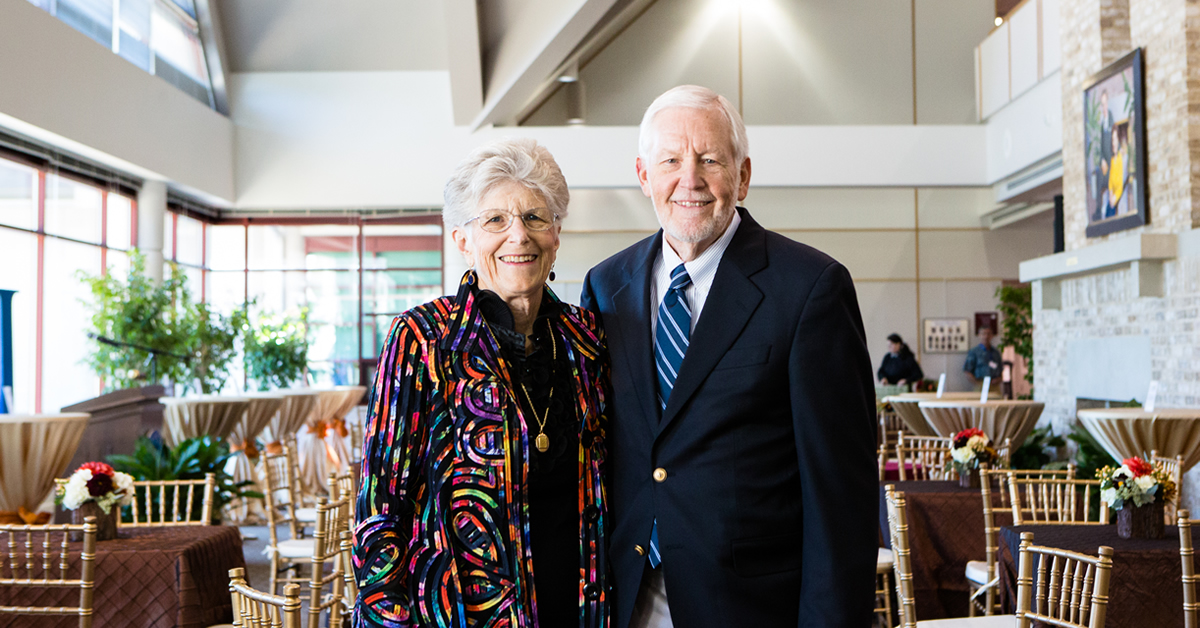
This summer, OLLI Wilmington members Neil and Betsey Cullen presented a session about OLLI’s 2017 fundraising successes at the 2019 Southern Regional Conference for Learning in Retirement, July 29-31, at University of North Carolina Wilmington.
“Exceed Your Fundraising Goal: It Can Happen,” was the title of their talk covering the three-and-a-half-year “Renewing the Dream” fundraising campaign which they spearheaded along with then OLLI Wilmington council chair Pam Meitner. The $1.5 million campaign eventually closed at $1.78 million, resulting in the successful funding of Arsht Hall renovation projects in 2018 without raising member fees.
Bruce Peabody of the Florham Institute for Lifelong Learning at Fairleigh Dickinson University in Madison, N.J., attended their presentation as a Road Scholar, writing about it for the Road Scholar LLI (Lifelong Learning Institute) Resource Network. The article is shared here with thanks to Bruce Peabody and Road Scholar LLI Resource Network.
Launching and executing a successful fundraising campaign is a bit like skydiving. For many people, these activities trigger more fear than excitement. They both require careful planning, confidence, and good rapport and communication with your team. And having some luck surely doesn’t hurt.
Fortunately, at least in fundraising, you can make your own luck. At least, that was part of the message shared by Neil and Betsey Cullen, the chair and vice-chair of the Fundraising Committee at the OLLI at the University of Delaware, Wilmington. In 2017, the Cullens completed a five-year campaign to raise funds for their program’s dedicated building, and this summer they shared their insights, expertise and genuine enthusiasm for fundraising at the 2019 Southern Regional Conference for Learning in Retirement.
I was fortunate enough to attend the Cullens’ presentation, “Exceed Your Fundraising Goal: It Can Happen,” as a Road Scholar scholarship recipient. This title, the content of their talk, and their overall demeanor captured key ingredients of successful fundraising: pragmatism, optimism and a “roll up your sleeves” work ethic.
The central object of the Delaware campaign was to raise $1.5 million to support a major renovation for the OLLI building on campus – without raising member fees. A secondary goal was the seemingly implausible task of getting 100 percent participation from the OLLI members. The campaign exceeded the fundraising goal (raising $1.78 million) and achieved a 92 percent participation rate. “We amazed the university and ourselves,” the Cullens said.
So what does the Delaware experience teach us about what makes for successful fundraising for learning in retirement programs? In addition to emphasizing systematic, early and comprehensive planning, the Cullens identified “five pillars” – or legs – of a successful campaign.
A successful and well-organized communications plan helps ensure that all the “pillars” of fundraising are sound, coordinated and doing work to support the same common goal. Beyond these points, an undercurrent of “Exceed Your Fundraising Goal” was the importance of the personal touch. Successful fundraising requires local knowledge, interpersonal enthusiasm, emotional intelligence, lots of direct contact, patience, and awareness of potential donors’ (and volunteers’) backgrounds and capacities.
As the Cullens explained, “Some people don’t want to have lunch, but just want to give, and others want lunch, but don’t give.” Successful fundraisers will remain positive and open-minded about these encounters, but will learn from the experiences and refine their techniques.